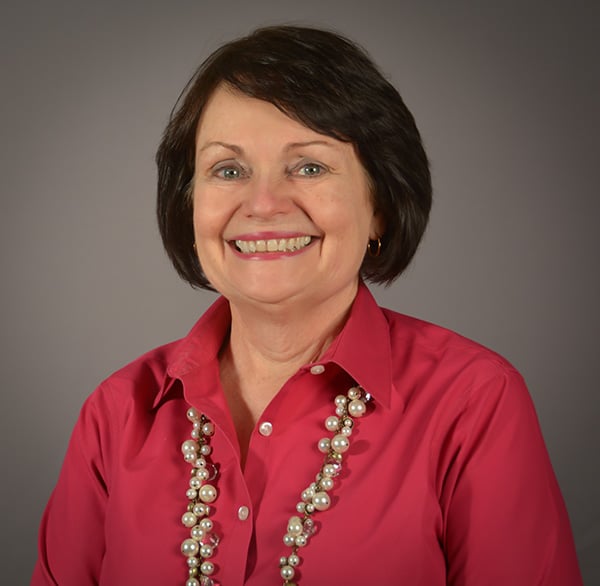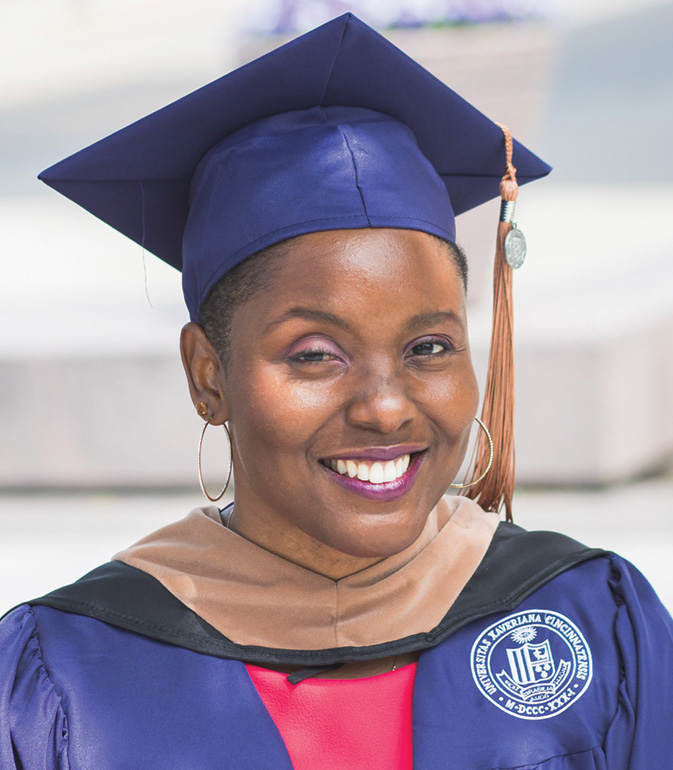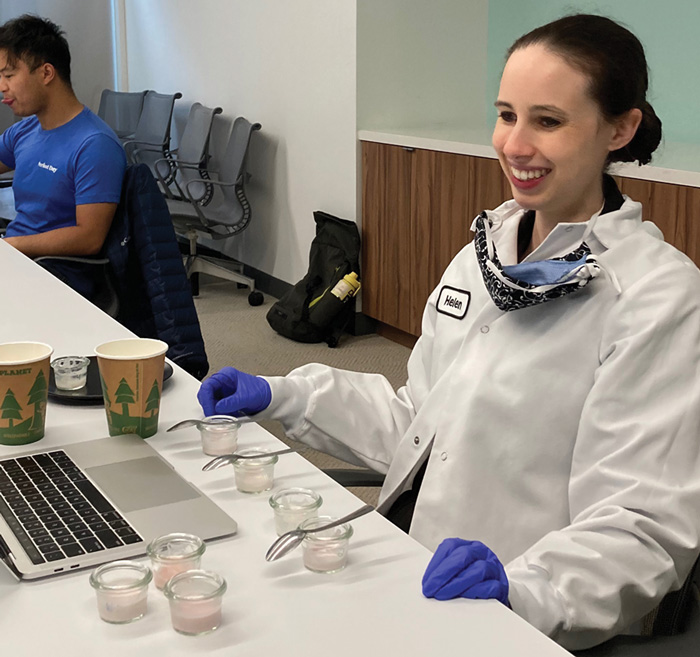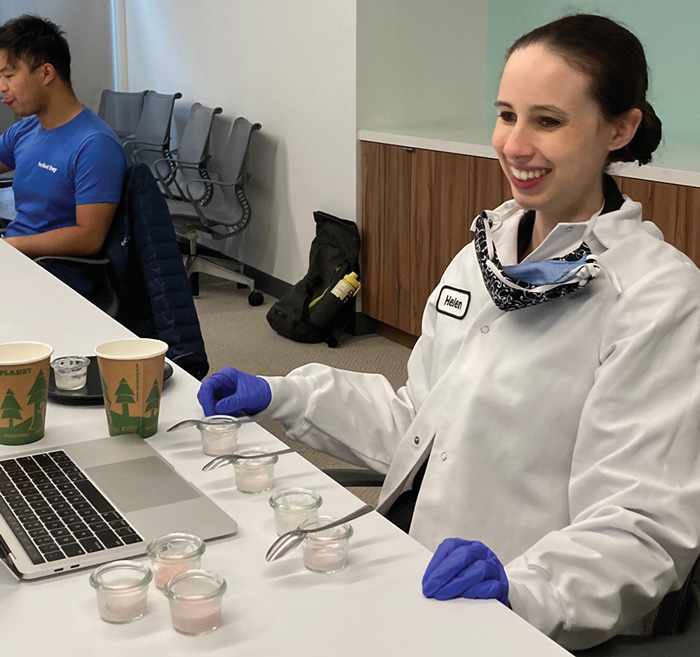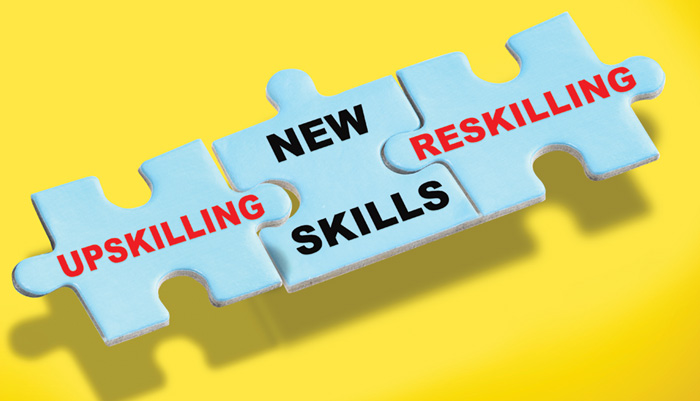
Unlocking Your Potential
Want to advance your career? Prepare to take initiative, embrace risk, and stretch beyond the science.
Article Content
A couple of decades ago as a freshly minted Purdue University food science graduate, Michelle Frame embarked on a career at M&M Mars with a vision of working in R&D. Her employer had a different vision.
“They said, ‘Here’s what you need to know about M&M Mars,’” Frame recalls. “‘We could put you in R&D, but you can’t move up until you spend a stint in production.’”
Frame took it in stride, figuring it was better to do in-the-plant shift work at age 22 rather than later in her career. Mars was installing a state-of-the-art production line to make Snickers ice cream bars, and she got hands-on experience. “It was fascinating, and I had these great opportunities to work with fantastic engineers and other scientists,” she says.
Her learning didn’t stop there. “When we went to do something, even if we were told to do it, we first had to write a document saying why we were doing it,” says Frame. And when a project or process was complete, more documentation was required: “Here’s what we did. It worked, or it didn’t. Here’s what I think the return on investment is going to be.”
Those lessons in production, strategy, accountability, and communication stuck with Frame as she continued on a career track that took her into technical sales and ultimately led her to establish candy product development company Victus Ars.
Today, many fledgling food science professionals aren’t getting those kinds of career-building opportunities, says Lauren Lackey, president and owner of product development consultancy Centauri Innovations. Mentoring and comprehensive training programs have become casualties of the current business climate of intense profit pressure, accelerated product development timelines, and R&D downsizing.
“Clarity and curation of the career path rarely happen, so it can be up to the individual to figure out what they need to grow,” says Lackey.
Research findings from global human resources consultant Mercer as well as from the Society for Human Resource Management show that both employers and employees prioritize skills development. Tried-and-true competencies aren’t always enough, spurring an ongoing need for upskilling (see sidebar "The New Career Currency: skills").
Investment in skill building is getting some attention at the corporate level, agrees Jennifer Steplowski, a learning development strategist who previously worked at Kraft Heinz. But to advance, she says, employees need to take the initiative.
“If you’re serious about developing your career, start to find ways to invest in yourself and your own development,” says Steplowski. “Figure out what value you bring and how you’re driving that organization’s value in the marketplace.”
For Luan Blancher, a food scientist who transitioned from the sensory team into a role as associate beverage category manager at flavor company Givaudan, adding value meant enhancing her business expertise. “For me, I knew there were some parts of the business that I wasn’t going to learn on the job, so I decided to seek that knowledge and those experiences myself,” says Blancher, who graduated in May with an MBA, which she earned while working full time.
“As a scientist, sometimes we zoom in a lot, we get so focused on our particular project, and yes, we understand the objective, but sometimes we don’t understand how that fits into the bigger picture of the company, the overall strategy,” Blancher reflects. “For me, it was all about having more business acumen and really seeing the bigger picture.”
To glean more insights into staying relevant and adding value in the workplace, Food Technology turned to science of food professionals who’ve done precisely that. Here’s what they had to say about making career transitions, cultivating soft skills, seizing opportunities, and more.
Don’t Limit Yourself
Pamela Rupp was in R&D with Gilroy Foods, a division of McCormick & Co., when a personality test opened her mind to the possibility of shedding her lab coat. She transitioned into technical sales, a move that allowed her to capitalize on her people skills and her scientific expertise.
“I had never taken a personality test, was never exposed to something like that,” says Rupp, who also reaped the benefit of a McCormick management training program while working for the company. “For me, it [the personality evaluation] was game changing.”
She tested as “highly influential” and thus well suited for sales. “Speaking to people comes naturally to me, but it took me years to understand that about myself,” reflects Rupp, who is currently a regional sales manager for Biospringer North America and hasn’t looked back since moving out of the lab.
Lorraine Niba taught food science at Virginia Tech for four years before deciding to make a change. She earned an MBA and embarked on a career in the food ingredients business.
“I felt that having the opportunity to help solve some of the challenges in the food industry value chain and bring products to the marketplace that could positively impact the health and wellness of consumers was a worthwhile career path for me,” says Niba.
Niba spent more than a decade in positions of progressive responsibility at Ingredion, and earlier this year accepted a role as vice president of North America sales at food technology company DouxMatok. She says her scientific and business skill sets have some significant commonalities.
“I have found that the expertise and experience of asking research questions and having the discipline of scientific inquiry can be leveraged for more robust business processes,” she observes. “For instance, the ability to ask probing questions and actively listen to customers and business partners to draw critical insights are skills that are transferable from a science background to a business setting.”
Helen Joyner also made a switch from academia to industry, although she stayed on the technical side. Her skills transferred easily. “Most peopledon’t realize this, but working in academia is very similar to working in industry,” says Joyner, who joined alternative protein company Perfect Day after taking a sabbatical from the University of Idaho, where she had a tenured teaching post.
“In both positions, you have projects to manage, deadlines to meet, and reports to write. You also have to handle multiple demands on your time and function well under pressure,” says Joyner. “The ability to convey knowledge to others is just as important in industry as in academia.”
Translate Science Speak
Scientific and technical insight is critical to operating a successful food business, but only if it’s communicated effectively. This can be tricky for food scientists, says Frame.
“There is a huge gap between how food scientists (or any scientist for that matter) talk and the information executives need to run the business,” Frame wrote in a recent post on the IFT Connect digital communication platform.
“The more you can bridge that gap, the better,” Frame continued. “For instance, you can go to management and say, ‘The pH of the product was off all morning’ in which [case] you get a blank stare. Or you can say, ‘One of our measures was out of bounds, and that caused the product to not set up properly. It’s not reworkable, so the product loss is X dollars. I’m writing up a preventative method now. And if we put in an auto-sensor line for the cost of X dollars, it will pay for itself in six months.’
“Understanding the business impact of what goes on in food manufacturing can reignite your career!” Frame emphasized.
Blancher agrees that framing the message for the audience is critical. “How do you talk to an audience that’s not technical? . . . You always have to think about your audience. Whenever I’m presenting to customers, I always try to find out who’s on the call and then try to tailor those presentations.”
Avoid Tunnel Vision
In a related vein, technical professionals need to work at seeing beyond their project areas, counsels Asim Syed, senior director, Food Applications R&D, with ingredients company Brenntag Food & Nutrition.
“We have to understand that everyone has a role in the whole organization,” says Syed. “If my science is not synced and aligned with the objectives and goals of finance and marketing, no product will be launched successfully.
“If you’re a scientist,” Syed continues, “you should try to talk to people in the finance department, in marketing, and try to understand their perspectives.” Only then, he says, is it possible to see the big picture. “I don’t think there are any shortcuts for that,” he notes.
Technical food science consultant Robert McDougall shared similar sentiments in an IFT Connect post. “Get your head up from the bench sometimes, and keep looking at the horizon,” he urged.
Master the Soft Skills
Soft skills don’t always get the respect they deserve. But career experts agree that they’re critical, and in the post-pandemic world, employers prize skills like resilience, empathy, and the ability to cope with ambiguity. Research by global consultancy McKinsey found that as the work world automates and job functions change, U.S. and European workers will spend an estimated 24% more time on soft skills by 2055.
“We call them soft skills, but I don’t think they are,” says Frame. “I think they’re really hard. Chemistry, we can be tested on; we can memorize that stuff.” But self-awareness, learning how to read people, and understanding that others communicate and make decisions differently than you do—those skills can be difficult to master, she says.
Niba identifies courage and resilience as among the abilities that have been most critical to her career success. “Soft skills to complement academic qualifications is what really differentiates one in the workplace,” she maintains.
Also on Niba’s priority soft skills list are social and emotional intelligence; self-awareness, self-definition and clarity of purpose; communication skills and the ability to tell a compelling story; leadership skills; interpersonal skills, networking, and the ability to influence; having a vision and purposefully executing on the vision; and organizational awareness.
“In the advanced computer age, often the ‘human’ factor gets diluted,” reflected Adrian Ramirez, retail food safety manager for a grocery chain, in an IFT Connect post.
“Speaking and being comfortable in front of others is key to getting goals completed, particularly in a team setting. Group dynamics can change in an instant, and being able to shift gears as fast as your audience changes is always helpful.”
“Communication is the most critically important part of my job,” agrees Brittney Moses, who works as an R&D scientist for Ellsworth Cooperative Creamery, a cheese manufacturer. “Being able to listen and understand project goals and apply feedback on project progress is just as important as talking about projects and being able to communicate on different levels, depending on the audience.
“Work ethic, critical thinking, and teamwork are crucial in an R&D position to drive projects forward and to solve problems that come up,” Moses continues. “Finally, a positive attitude and treating others as intelligent human beings goes a long way.”
Get Uncomfortable
Joyner offers this advice for career growth: “Keep your eyes open for opportunities, and don’t be afraid to take on something that will stretch you a bit. Mild discomfort is where some of the best learning happens.”
Frame puts it even more bluntly. “You have to scare the hell out of yourself,” she says. “So whether that means . . . Toastmasters, finding ways to present at things, joining nonprofit boards where you’re just forced to talk in front of people that you’re not used to talking in front of—anything you can do to keep pushing those capabilities is what I did.”
It was the same for Niba, who says that a key step for building the kinds of real-world skills that typically aren’t taught in the classroom “was to step out of my comfort zone and seek challenges and opportunities to stretch myself.
“Getting to work with different people or in different functions or even different countries provides a great opportunity to develop the social and emotional intelligence skills needed to navigate new spaces,” Niba adds.
Know That There Will Be Tradeoffs
Career choices have consequences, of course, and you’ve got to make peace with that, science of food professionals agree.
As happy as she is with her professional trajectory at Givaudan, Blancher admits that she misses some of the data analysis aspects of the sensory team job she had before moving into marketing. And although she may feel the urge to get a bit hands-on when collaborating with her former sensory group colleagues, she’s come to recognize that she’s no longer in sensory and needs to take a step back.
“Without a doubt, choosing one path often means giving up something else, and I have to be honest in saying that I do miss the job of interacting with students and the elation of seeing them graduate or finish their research projects and defend their theses,” says Niba of her transition from academia to industry. “But I also know that I’ve had a rich career in pursuing a cross-functional path in the food industry.”
Syed says that more than a decade ago, he had a career track decision to make. “I could have gone into product management, which is kind of marketing, or I had chance to keep doing the R&D and applications research. That’s when I chose to take the technical route.
“Some people might say I could have made more money or had a better position in the company if I were on the management route, which is possible, but I don’t think I would have enjoyed the work as much,” he reflects. “I want to be close to the science.”
The key is to keep an open mind—and to keep trying new things until you’ve found the niche that suits you best, advises Biospringer’s Rupp. “The more experience each individual gets, the better they are at understanding what they like and dislike, and what to do next,” she says.
For a curated list of resources to dive deeper into this topic, visit iftexclusives.org/unlocking-your-potential.

